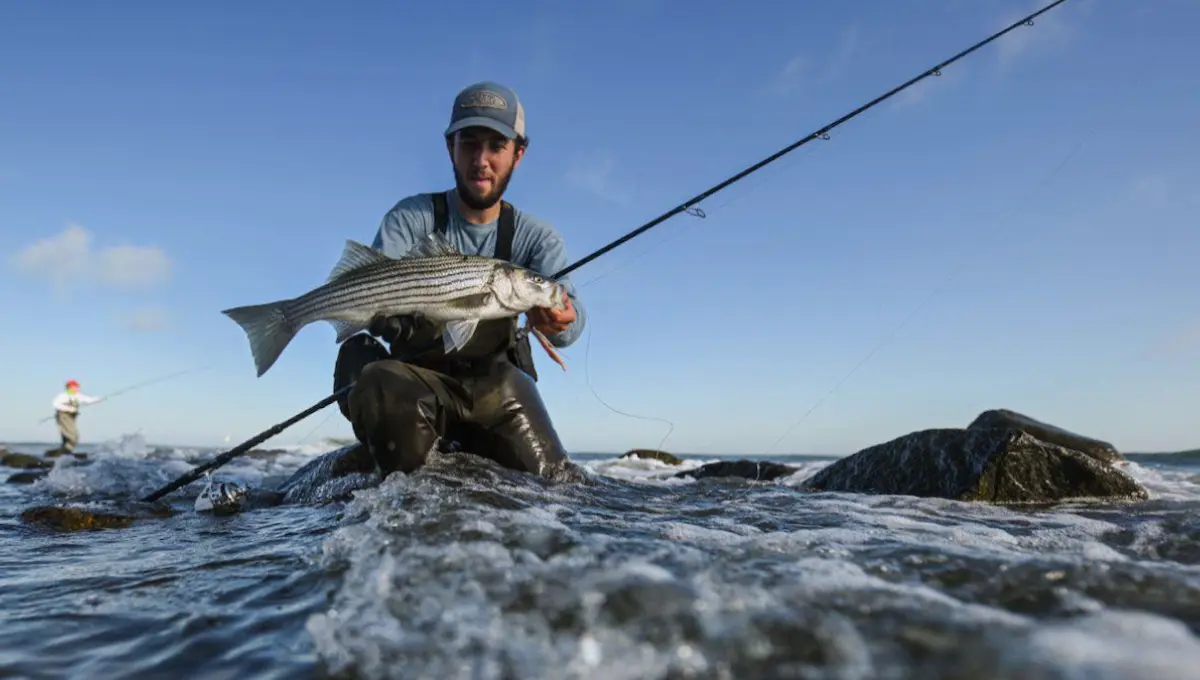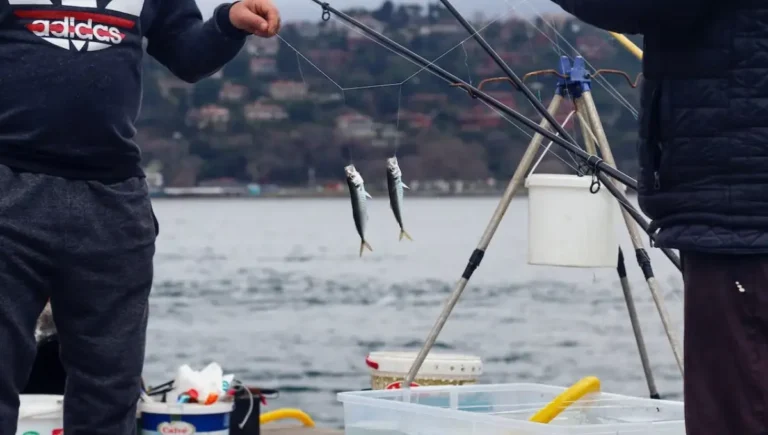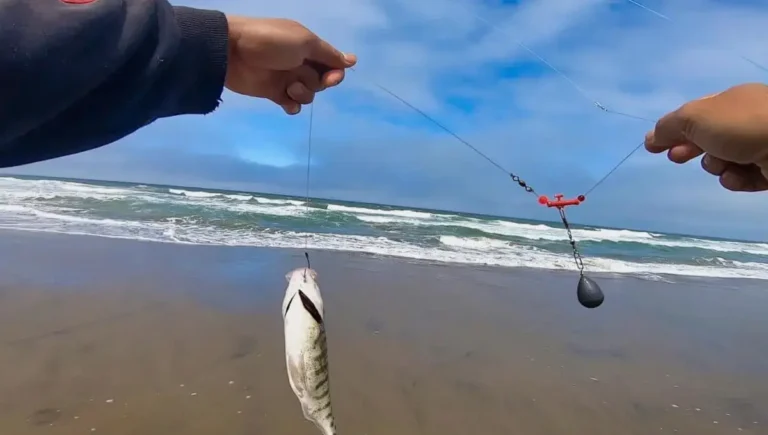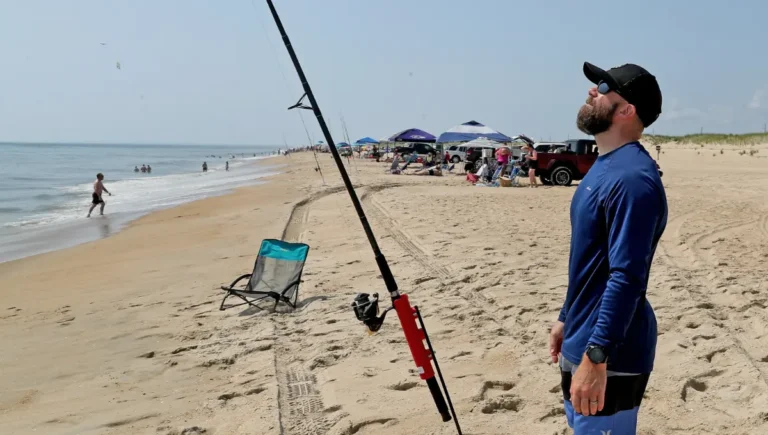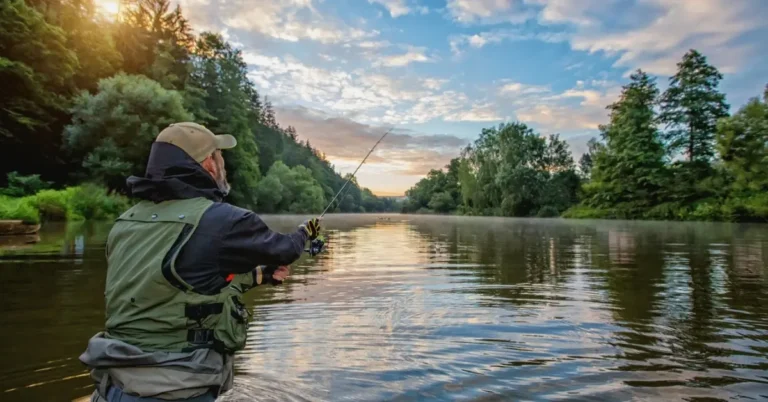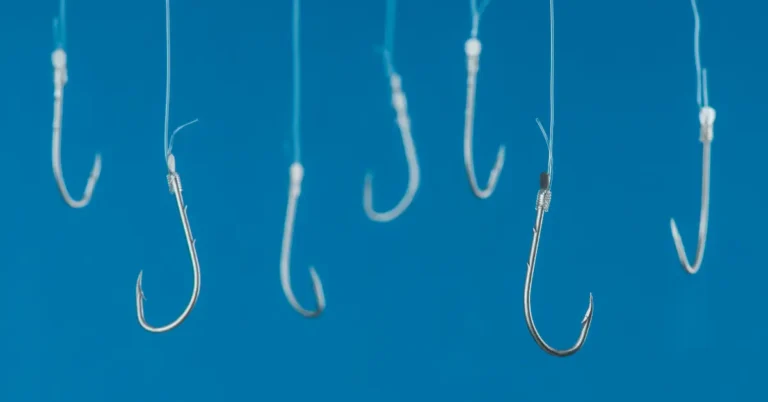What is the Best Pound Test For Surf Fishing in 2024?
Ensuring a secure connection between you and the surf is crucial in surf fishing, where your line is the primary tool to battle and reel in fish. As a surf angler, it’s imperative to safeguard this connection from potential threats that could compromise your terminal tackle, risking line breakage or spooling.
The pound test, measuring a fishing line’s breaking strength, becomes pivotal in this scenario. Before embarking on a surf fishing excursion, verify that your chosen line boasts an adequate pound test aligned with your objectives and prevailing conditions.
Factors such as target species, weather, surf conditions, structures, reel size, and line type influence the optimal pound test for shore fishing. Explore these considerations to make an informed choice on the best pound test for surf fishing in 2024.
Also Read: Types of Knots for Fishing
What Factors Determine Your Pound Test Choice in Surf Fishing?
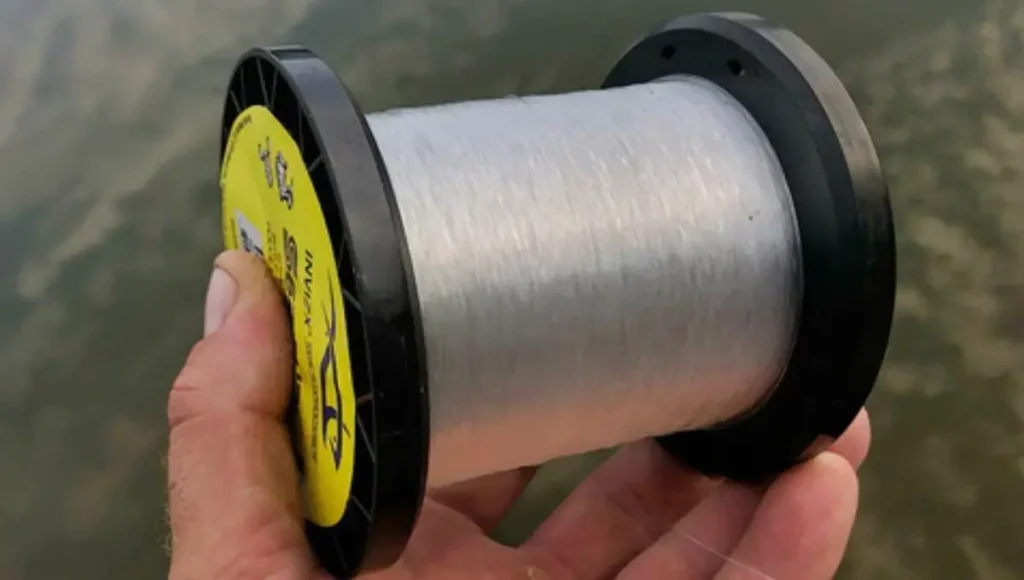
Before identifying the optimal pound test for surf fishing, let’s first explore the factors to consider when selecting the strength of the line.
Your setup
How you configure your terminal gear is the primary factor influencing your pound test selection. Considerations such as attaching a shock leader, tying a short leader, and deciding whether the sinker or hook comes last play a crucial role.
These choices significantly impact the weight of your surf fishing line. For instance, using a shock leader allows for a smaller pound test, while connecting a robust leader enables a lower pound test when dealing with rough grounds and abrasive structures.
Conversely, a thick line may be necessary to prevent cut-offs without a sturdy leader. In essence, the size of your surf fishing line is intricately tied to your rig and line configuration.
The targeted species
The species of fish you aim to catch is another crucial factor to weigh when determining the appropriate pound test. It’s a straightforward rule: the larger the targeted fish, the higher the pound test needed. Typically, shore-caught species weigh less than 10 pounds, making a line within the 10-20 lb test range suitable for most scenarios.
This range, coupled with experience and ample line on the spool, can even handle larger predators. Additionally, the presence of sharp-toothed species like bluefish, mackerel, or red snapper necessitates using thick, abrasion-resistant lines. To maintain a thin line while targeting such fish, attaching a robust leader before the hook provides the necessary protection against sharp teeth.
The fished structures
Seabeds abundant in rocks and boulders necessitate the utilization of robust and thick lines to minimize the risk of cut-offs. Opting for a higher pound test translates to a larger line diameter, providing enhanced resistance against abrasive structures.
Likewise, when aiming to maintain a slender main line while fishing in rugged terrains, adding a sturdy leader at the end serves to withstand abrasion.
Your casting weight
During casting, the sinker exerts considerable pressure on the line, and insufficient strength may lead to snapping, causing the sinker and hook to become airborne. This risks the loss of valuable items and poses a danger to yourself and others. It’s crucial to ensure your line has ample pound tests to absorb the stress generated during powerful casts.
A general guideline is to use at least 10 pounds of line weight for every ounce cast, encompassing sinker and bait. For instance, if employing a 4-oz sinker with a 1-oz bait, the minimum pound test should be 50 lb. If avoiding such a heavy line, connect a shock leader of 27-30 feet with a 50 lb.
The weather and surf conditions
When you’re fishing in strong currents or windy conditions, using a thick fishing line can be a problem. A thicker line catches more pressure from the current and wind, making it easier to pull it out of the ideal fishing area.
Fish like to hang out in places where they can easily find food and hide from bigger predators. In the surf zone, they concentrate on specific spots. This means that when fishing in the surf, you must be careful where you put your bait. You also want to make sure your bait stays where it should.
That’s why it’s a good idea to use a thin fishing line during rough weather and surf conditions. A thin line helps your bait stay in the right spot, increasing your chances of getting bites.
The type of line
Choosing the right fishing line is important when you’re surf fishing. There are different types, like braided, nylon monofilament, and fluorocarbon.
Braided lines are strong but not very thick. They’re great for handling big fish in rough waters but are not good at resisting abrasion, especially in rocky areas.
On the other hand, nylon monofilament and fluorocarbon lines are thicker and not as strong as braided lines. They’re better for fishing in places with rocks and fish with sharp teeth because they resist abrasion well.
When you’re going for big predators like sharks from the shore, it’s recommended to use braided lines. It gives you the strength to handle them.
Mono and fluorocarbon lines also stretch more than braided lines, acting like a safety cushion when there’s a lot of pressure on the line.
So, the type of line you choose depends on where you’re fishing and the fish you’re targeting.
Your reel
When choosing your fishing line, think about the size of your reel. Big reels can handle thick lines with more weight. But if your reel is small, you’ll need a lighter line because it can’t hold as much.
It’s good to have about 250-300 yards of line for surf fishing on your reel. So, pick a line weight that lets you have enough of it on your reel, regardless of size.
Your experience
The more you fish, the less heavy the line you need. I’ve seen experienced anglers catch huge fish (over 40 lb) using very light lines (less than 15 lb test). How do they do it? Well, they’re skilled.
They know how to handle their thin line during a fight. This includes things like:
- When and how to reel in the line.
- When to use their palm on the reel.
- How to move the fishing rod during different parts of the fight.
- When should the line be tighter or let the fish run.
- When to walk along the shore while fighting a fish and when to stay in one spot.
These skills can be learned, but it takes many years of practice and learning from mistakes to master them.
Best braided fishing line for spinning reels
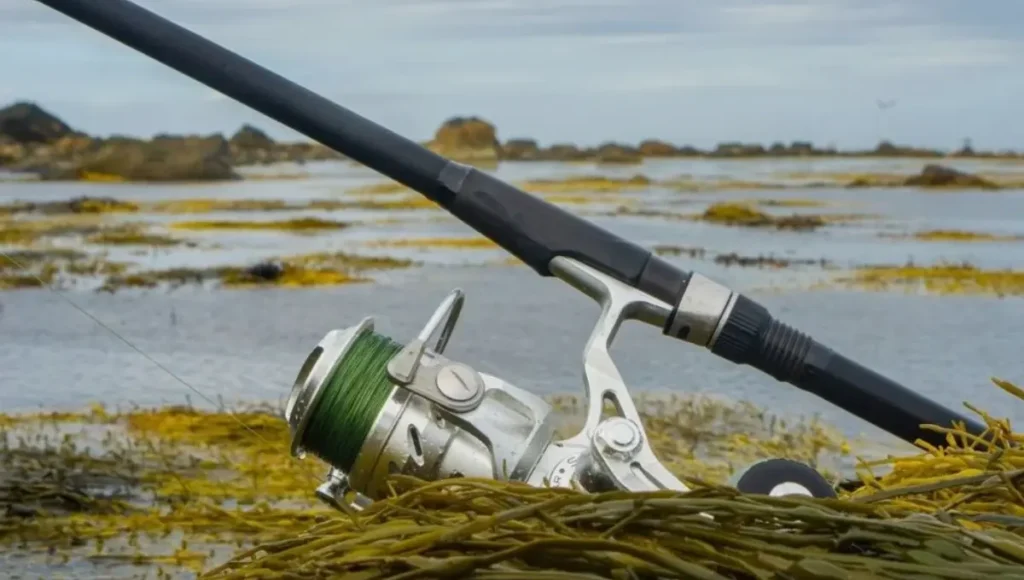
Power Pro Braided Fishing Line – Power Pro is among the most popular and highest-performing braided fishing lines. It casts very smoothly and has incredibly strong breaking strength for its diameter. It shows very little memory and line memory is minimal. It is very abrasion-resistant and will last a long time. It is a top choice for bass, saltwater, and other strong fish.
Sufix 832 Advanced Superline – Sufix braid is very strong for its diameter like Power Pro, but may cast even more smoothly. It is very thin and practically disappears underwater. It has an impressively low stretch and a great feel when fighting fish. It is very durable and holds up well to abrasion. It is an excellent all-around braided line for both fresh and saltwater fishing.
Spiderwire Stealth Braided Fishing Line – Spiderwire’s Stealth line has proven itself as a high-performing, budget-friendly option. It casts well and has strong knot strength. It shows less memory than some other braids which helps with casting. It holds up well during long battles with fish. It is a great value choice for both beginners and experienced anglers.
KastKing SuperPower Braided Fishing Line – KastKing’s SuperPower braid casts smoothly like top-name brands but at a much lower price point. It has zero stretch which allows you to feel every bite. It won’t abrade or break down easily. It is very thin and practically invisible in the water. It performs reliably in both fresh and saltwater. It is an excellent budget choice.
Berkley FireLine Crystal Braided Fishing Line – FireLine was one of the original superlines and remains a solid performer. It casts very well and has almost no memory. It is very abrasion-resistant and incredibly small in diameter. It provides a sensational feel when fighting fish. It holds knots extremely well. It is a top choice for bass and panfish.
What’s wrong with a low pound test?
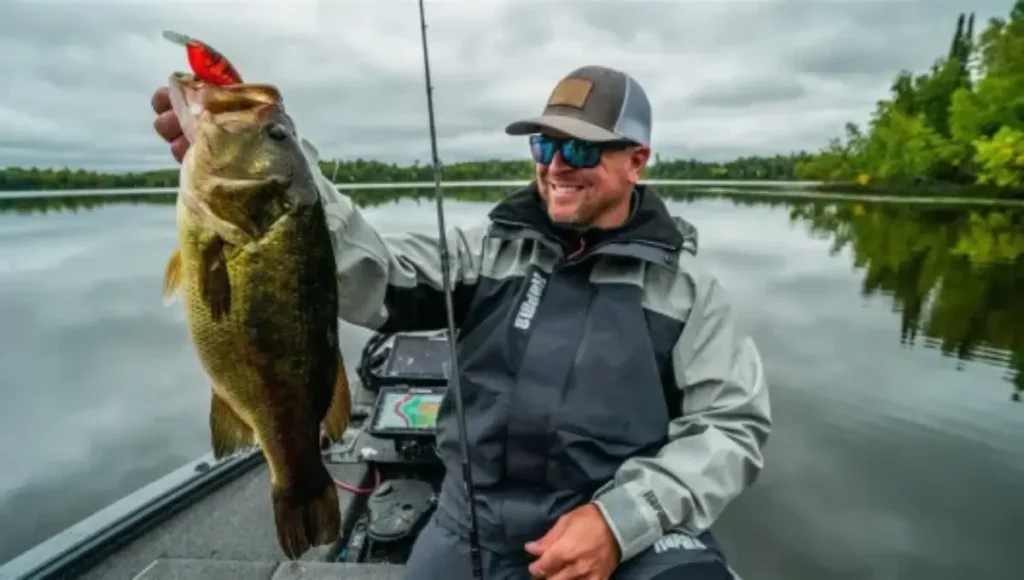
A low-pound test forces you to use a low-drag
Understanding the drag system in fishing is crucial. It acts as a safety mechanism, allowing the line to release under pressure when a fish tugs. Some mistakenly believe that using a low-pound test line increases the risk of breakage due to its thinness.
However, the reel’s drag system plays a vital role. The line only breaks if the drag is set higher than the line’s weight. To mitigate this, it’s recommended to set the drag at about 1/3 of the line’s weight. Yet, setting it too low in surf fishing poses challenges with stronger nearshore fish. While catching a 15-20 pound fish with a 6 lb test line is feasible, heavier scenarios demand caution.
Opting for a higher pound test allows for better control during the fight, reducing the risk of losing the entire line. The concern with a low-pound test is not a heightened breakage risk but an increased likelihood of losing the line when battling a sizable fish.
A low-pound test is not good against abrasion.
When fishing in areas with rocks and boulders, you need a thicker line to withstand the sharp edges. generally, a lower breaking strength means a thinner line. This can be a bad choice when fishing in places with rough surfaces because the line is more likely to break if it rubs against sharp objects.
The same is true when trying to catch sharks or other fish with sharp teeth. These types of fish can easily bite through a thin line when they go for your bait. So, a thicker and stronger line is better to avoid losing your catch.
How to compensate for a low pound test?
Using a low-pound test line, like an 8 lb test, risks getting your line emptied by a powerful fish, like a 40 lb redfish. While this doesn’t happen often, preparing for such situations is crucial.
Fish behavior can be unpredictable once hooked. Some fish might make continuous fast sprints, others shorter consecutive runs, and some might yield and come in easily. Using a consistently low pound test line increases the chances of a fish taking all your line one day, regardless of skill.
However, here are some tips to reduce this risk:
- Use a larger spool (6000 or more): This allows more lines on your reel.
- Use a softer rod (medium action): It helps absorb fish runs and reduces line release.
- Head the rod’s tip seawards when the fish runs: This absorbs shock and reduces line release.
- Palm the spool during the fish’s run: Limits line release.
- Know when to retrieve the line: After a long run, retrieve fast to gain the line. Reel in extremely slowly otherwise to avoid provoking the fish.
- Be Patient: The fish is stronger and faster, so don’t force it to shore. Wait for it to tire and become easier to control.
Remember, it’s a battle of attrition where patience is key. The winner is the one who lasts longer in the fight. If you survive the initial runs, you’re likely to secure the catch. Stay calm, be patient throughout the fight, and remember that the fish might strike again unexpectedly.
What’s wrong with a high pound test?
Choosing the right fishing line strength is important for catching big fish, but that doesn’t mean you should always go for the highest pound test available in the store. That would be counterproductive.
While a thicker line gives you more control when fighting fish, it also has some downsides that can affect your overall success in fishing.
Firstly, thicker lines, whether braided, monofilament, or fluorocarbon, tend to be more expensive.
Secondly, thicker lines experience more pressure from currents and tides, making them less stable in choppy surf conditions.
Thirdly, because thicker lines have a larger diameter, they face more air resistance during casts, resulting in shorter casting distances.
Moreover, the wind has a greater impact on thicker lines, making it harder for your bait to stay where you want it.
Additionally, thicker lines take up more space on the reel, reducing the amount of line you can fit. This limitation can negatively affect casting distance.
How to compensate for a high pound test ?
A powerful fishing line, while strong, has one drawback—it’s thicker, which makes it less stable in heavy currents and strong winds. This instability can prevent your bait from staying in the optimal feeding area, reducing your chances of getting bites.
To counter this, a thick line should be paired with a heavy casting weight, ideally between 4 and 8 ounces. Pyramid and spider sinkers are excellent choices as they provide a better grip at the bottom and resist the impact of moving waters.
However, remember that increasing the weight affects your sensitivity to bites. It takes a sizable fish to move your heavy rig, making detecting subtle tugs from smaller fish challenging.
Additionally, be aware of your rod’s weight limit for casting. Going beyond this limit could lead to rod breakage or permanent damage. Respect the recommendations from your rod manufacturer to avoid this issue.
Heavy leads can also cause fatigue in your arms, wrists, and shoulders, potentially cutting your fishing trip short. Consider using braided lines instead of mono or fluorocarbon to compensate for a strong line. Braid offers higher pound test strength while keeping the line thin, providing better resistance to currents and winds.
Thick lines also have a downside—they limit casting distance. The larger diameter of the line experiences more air friction during casts, slowing it down and causing it to drop sooner into the water.
What pound test to use in the surf?
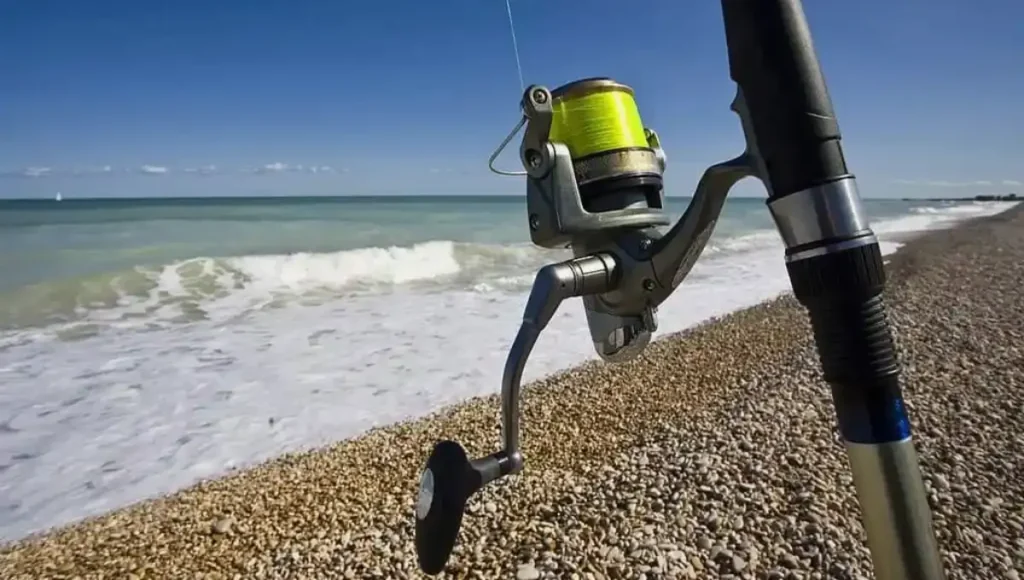
Now that we’ve covered many theories, let’s tackle the big question: what fishing line weight is best for surf fishing?
There isn’t a one-size-fits-all answer because it depends on various conditions. So, based on my experience, insights from friends, and online research, I’ll provide recommendations for different scenarios.
For open waters
For the main fishing line, go for 15-20 lb monofilament or 30-40 lb braid. I like braids, but if you’re still learning, monofilament is forgiving during mistakes.
The shock leader should now be 50-80 lb monofilament, depending on your sinker. Just remember, the rule is 1 pound for every ounce you cast.
As for the leader, use 15-20 lb monofilament or fluorocarbon. Fluorocarbon is less visible but costs more. If there are toothy fish around, go for a thicker leader.
For rough grounds
Choose a 15-20 lb monofilament or 30-40 lb braid for your main fishing line.
Choose 50-80 lb monofilament for the shock leader, depending on your sinker. This leader helps with casting pressure and protects against rough surfaces.
When it comes to the leader, use a 20-30 lb monofilament or fluorocarbon. Keep it thick, especially if it’s going to be in contact with rocks.
For strong currents or windy weather
For your main fishing line, choose a 50-80 lb braid. Braid keeps the line thin, helping you cast farther and handle strong winds and currents.
There is no need for a shock leader; stick with a straight braided line. This keeps the diameter low, crucial in dealing with strong currents and winds.
When it comes to the leader, go for a thin diameter. Use 15-20 lb monofilament or fluorocarbon.
For monstrous fish (sharks, tarpon, tuna…)
Choose an 80-100 lb braid for your main fishing line. Avoid using monofilament when going after big fish, as it can impact your casting distance and stability in the surf.
For the shock leader, there’s no need for one in this case.
Regarding the leader, go for an 80-100 lb monofilament or fluorocarbon. You can also consider steel leaders, especially when targeting sharks.
For large fish (bluefish, redfish, striped bass…)
- Main Line: Opt for a 50-80 lb test braid. Stick with braided lines, especially when going after heavy predators.
- Shock Leader: In this case, there is no need for a shock leader.
- Leader: Choose a 30-50 lb monofilament or fluorocarbon for your leader.
For medium-sized fish (pompano, trout, snapper…)
- Main Line: Choose a 15-20 lb mono or a 30-40 lb braid based on the structures and surf conditions.
- Shock Leader: Use 50-80 lb monofilament, adjusting based on the weight of your sinker.
- Leader: Decide between monofilament or fluorocarbon for your leader. The strength should be determined by the structures and the species you’re targeting. For example, if you’re going for a red snapper with sharp teeth, opt for a strong leader.
For small-sized fish (bream, perch, flounder…)
- Main Line: Choose between 8-15 lb mono or 20-30 lb braid, considering the structures and surf conditions. Remember that 8 lb is the minimum for surf fishing to avoid risking your gear.
- Shock Leader: Use a 50-80 lb monofilament for the shock leader.
- Leader: Decide between monofilament or fluorocarbon for your leader. Adjust the strength based on the structures and the fish you’re targeting.
Frequently Asked Questions
Conclusion
In 2024, the best pound test for surf fishing depends on various factors. A 15-20 lb monofilament or 30-40 lb braid is recommended for general use, considering the structures and surf conditions. Opting for 8-15 lb mono or 20-30 lb braid may be suitable for lighter scenarios, but caution is advised to prevent gear risk.
An 80-100 lb braid with an 80-100 lb monofilament leader is suggested when targeting heavy predators. Using a larger spool and a softer rod helps manage powerful fish runs. While powerful lines offer strength, they may be less stable in heavy currents and winds.
A thick line should be paired with a heavy casting weight, balancing sensitivity and distance. Ultimately, the best pound test varies based on the fishing scenario, requiring consideration of factors like fish size, environment, and personal preferences.
